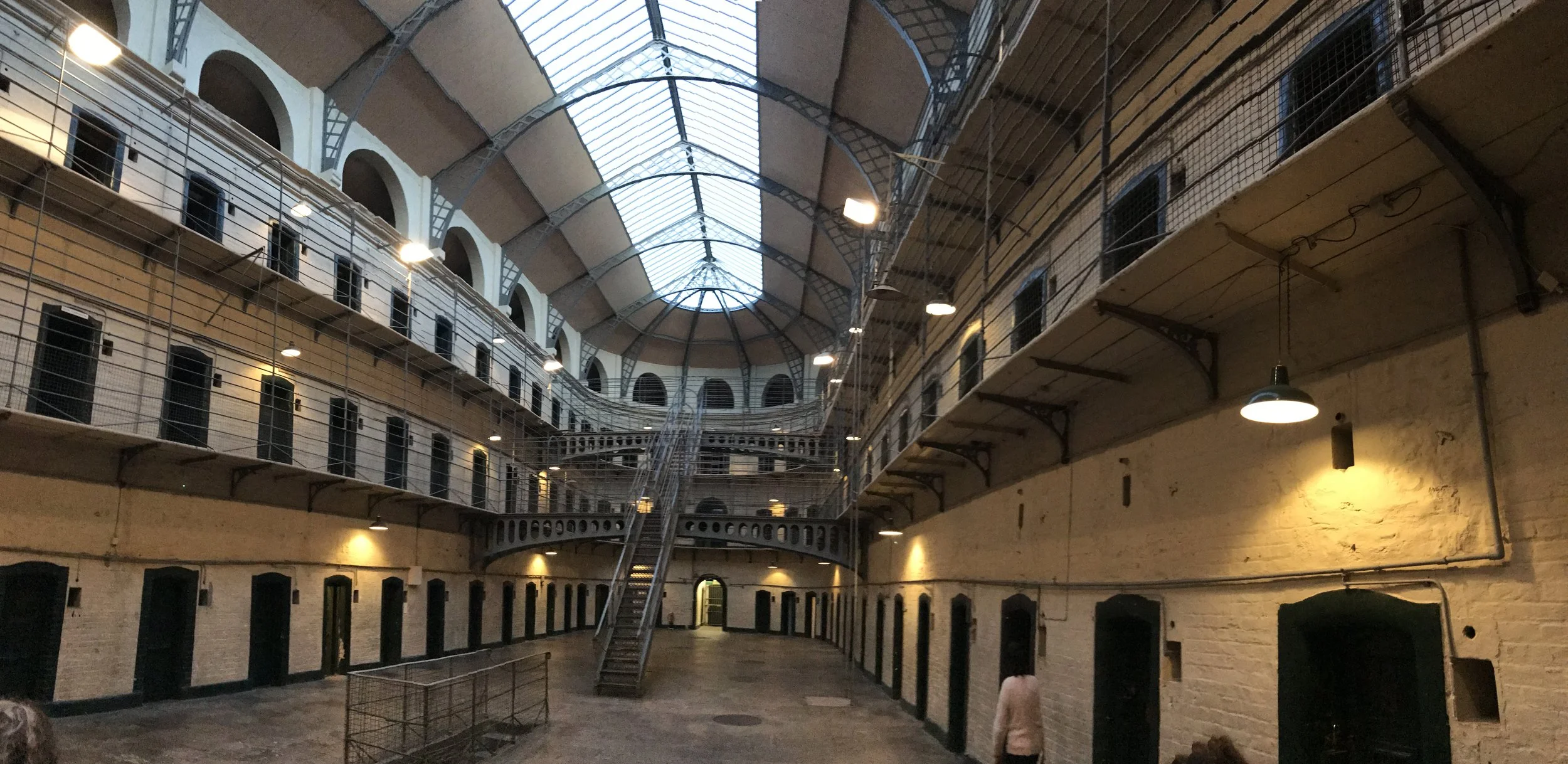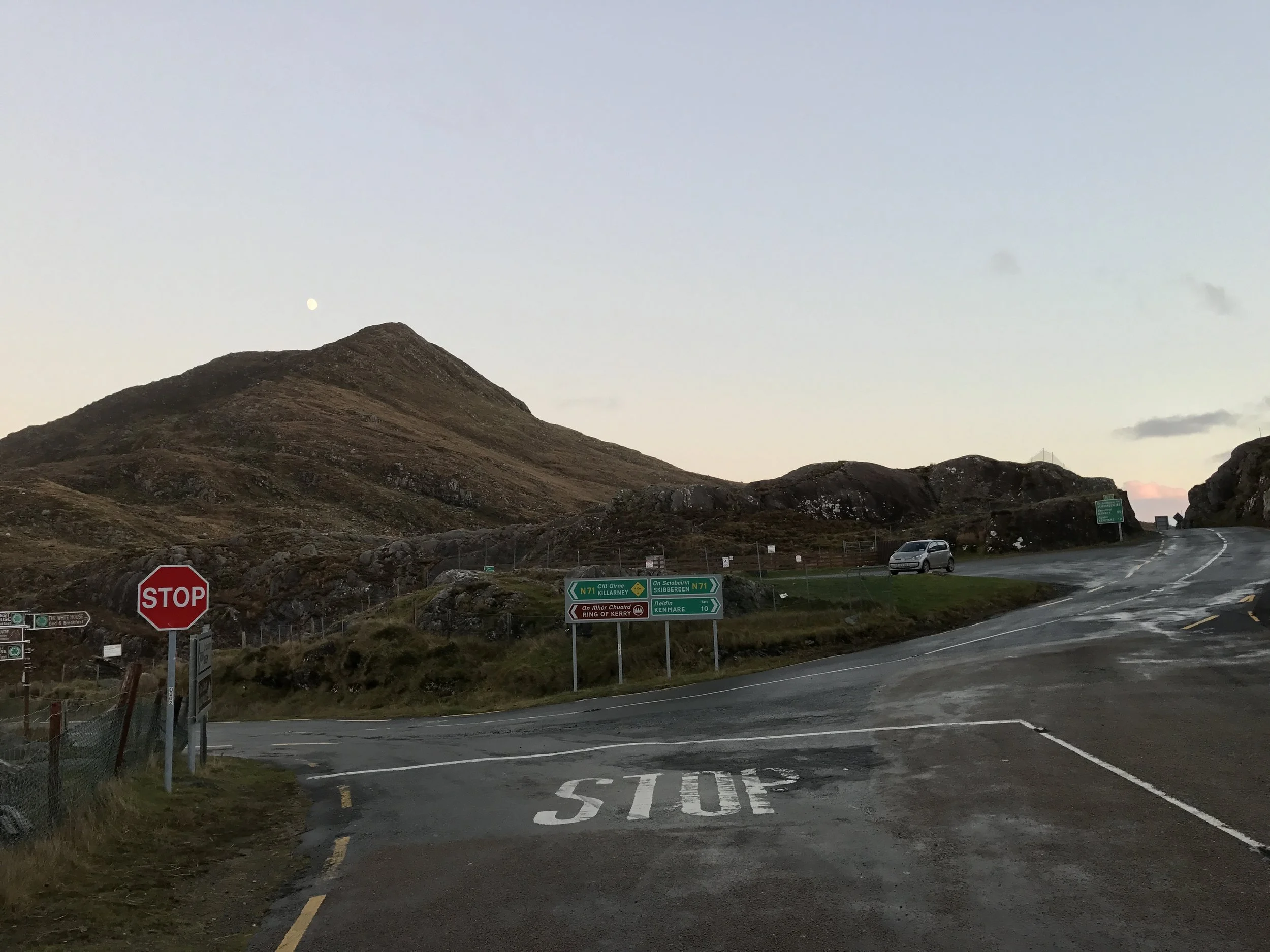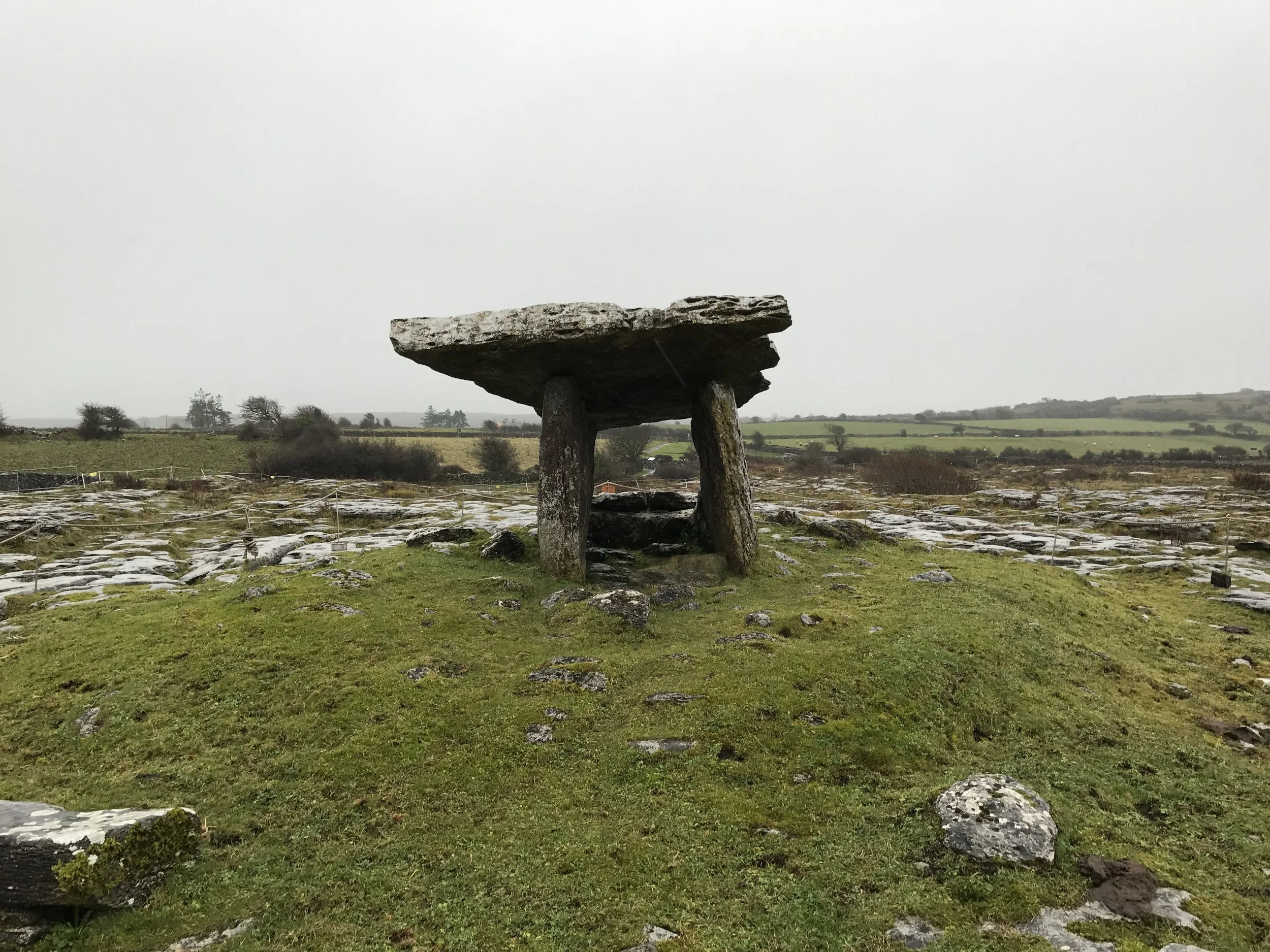While much of Dublin, and Ireland is full of light and music, there are darker places that represent the formation and history of Ireland as a whole. First among those is the Kilmainham Gaol, the central jail for Dublin from 1796 through 1924. While it was a jail, Kilmainham was also more than that - it was a central courthouse - and a site that is also linked to the Irish independence movement. From 1798 through 1916, the leaders of the various rebellions against British rule were imprisoned in Kilmainham Gaol, and in many cases, were executed within the walls of the jail. In addition to the many revolutionaries that were held in Kilmainham, the jail held many thousands of inmates throughout the years, including one as young as seven. While it was a seat of power, repression, and inequality for many years, Kilmainham eventually turned into a location that served as a rallying point for the Irish independence movement after fourteen members of the Easter Rising, including the wounded James Connolly were executed by firing squad in 1916. Today, Kilmainham is the largest abandoned jail in all of Europe, and is one of the most popular museums in all of Dublin.
Newgrange (Bru na Boinne)
Even though the Pyramids in Egypt, Macchu Picchu in Peru, and Angor Wat in Cambodia receive attention as some of the oldest structures on Earth, and rightfully so, there are other locations around the planet that are just as impressive, and just as mysterious. Out of all of these spots, it should come as no surprise that many of these structures are located in Ireland, and one of them, Newgrange, is considered one of the most important megalithic structures in Europe. Like the Poulnabrone Portal Tomb, the site at Newgrange is also a tomb, but is considered a passage tomb that was constructed at a similar time - items at Poulnabrone were dated at around 4200 B.C., and Newgrange was reportedly constructed around 3200 B.C., well before the construction of Stonehenge, and the aforementioned pyramids.
Dunluce Castle
Throughout all of Ireland, and Northern Ireland there are a plethora of ruins that inspire the imagination and have a rich history and lore. Some, like Blarney Castle are well known, and have had a myriad of visitors over the years. Other spots like Corcomroe Abbey, the Mulgrave Barracks, and even Mahon's Rock appear to have slipped out of time and seem to be waiting to be discovered again by visitors who stop by for a visit. One of the more accessible spots with a rich medieval and modern history is Dunluce Castle, whose ruins rest a hundred feet above the ocean along the coast of Northern Ireland.
How to drive like a boss in Ireland
Ireland. The Emerald Isle. Home of Saint Patrick, Guinness, Jameson’s, the Blarney Stone, fine music and literature and much more. And from the Giant’s Causeway in Northern Ireland to the Cliffs of Moher and everything beyond, Ireland is one of the most scenic countries in the world. While Ireland can be explored without a car through a variety of ways, having a car allows one the freedom and latitude to stop at that quaint roadside pub; to see the abandoned ruins without other people, let alone tourists; and to experience everything the country has to offer. Keeping that in mind, like any foreign country, Ireland has a number of rules in both obtaining a rental - and driving that rental that differ greatly from much of the world. For starters, unless one is from the United Kingdom, New Zealand, India, Australia, Japan, or parts of southern Africa, the concept of driving on the left side of the road is completely foreign. But never fear - below, I’ll cover the basics of how to properly obtain a rental, and how to drive it before concluding with some helpful tips related to driving in Ireland that will leave even novice driver’s feeling like an expert.
Poulnabrone Portal Tomb
With castles and looming nineteenth century manors, Ireland is well-known for its well-preserved parts of modern history. With much less fanfare, however, Ireland also has a number of well-preserved pieces of ancient history, such as Newgrange, and various portal tombs scattered around the island. While there are over one hundred and seventy portal tombs in Ireland in various states, none is more well-known, visited, and photographed than the Poulnabrone Portal Tomb. Before discussing the many unique features of Poulnabrone, it’s helpful to have a frame of reference as to what “Portal Tombs” or “Dolmens” were. While no one is entirely sure what portal tombs were constructed for, given the length of time that has passed – some five to six thousand years – they are classified as two standing stones standing parallel that are covered by a large top roof stone (known as a “capstone”). And, while no one knows exactly for sure, the “portal” aspect of the tomb was that of a gateway to the “Otherworld” – either keeping it out of our world, or for providing access between realms.
Mulgrave Barracks
If you are lucky enough to rent a car, or have access to a car in Ireland, one of the first things you will realize while driving around is that for the most part, there are not any non-scenic portions of the island. Having said that, there are many scenic drives in Ireland, and out of all of them, the Ring of Kerry is the most well-known, and one of the most beautiful, if not the most beautiful. In case you’ve never heard of it, the Ring of Kerry is a 180 kilometer long (111 mile) loop drive that covers most of the Iveragh Peninsula in County Kerry. In addition to passing through many seaside villages, the loop also passes through portions of Killarney National Park, and also has innumerable scenic views, both in and out of the park.
Glendalough
With a rich Neolithic history, and innumerable medieval ruins, Ireland has a plethora of unique and sacred sites that can be visited, and more importantly, are easily accessible. Out of all of these locations, however, there is only one site that features the well-preserved ruins of a medieval monastic village, and that is Glendalough. Located in a glacial valley, Glendalough (Gleann Dá Loch) literally translates to “Valley of the Two Lakes”. The site was founded by Saint Kevin in the sixth century; and before it was a monastic village it was a location the Saint himself lived had resided in on his own with few of the creature comforts of the time. During that time, according to legends and his writings, Saint Kevin made friends with animals, battled mental demons and knights, and lived a life of austerity in a cave.








